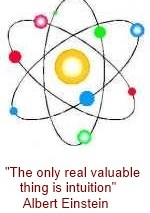Source:Get into the Zone
One of the most powerful terms used in world sport for decades is the mental state called ‘the zone’.
This is the mental state which produces super-human performances, amazing times and winning streaks.
Any athlete who is in this state is virtually unbeatable at their respective level of competition – and at the elite level, you witness records being well and truly smashed.
An athlete who is in the zone experiences an unusual feeling of effortless power, allowing them to feel as if their body is powered by a turbo-charged engine, and they find their body moving with maximum result but minimum energy.
The strange part about this is – this powerful performance does not feel as if it is being controlled by the actual athlete themselves! In fact, they often report feeling as if they weren’t responsible for the result at all – as if their body was being guided and directed by a more powerful force (and this is exactly what is happening).
Almost every athlete at some stage in their career has experienced this feeling to some extent and then wondered afterwards “how did I do that?” This is the mystery that surrounds the zone – why does it appear so fleetingly, and then disappear just as quickly as it came? And most of all – why can’t we access it all the time?
What is the powerful force which is guiding the body during this period? The answer is the sleeping giant that resides inside all human beings – the subconscious mind, the source of all bodily movement which also stores all past sporting memories and experience.
When an athlete is ‘zoning’, their conscious mind becomes quiet (the normally busy, chattering mind we use all the time), and this allows their more powerful subconscious to run their performance on ‘automatic pilot’, in the way a computer runs software.
This allows their movements to flow much easier, effortlessly increasing speed and power in a way that could never be matched by conscious thought.
This means that when you are in the zone, you have virtually no thought going through your mind whatsoever, your body is just moving on instinct and automatic-pilot, powered directly by your subconscious mind.
This is not to say that your body is moving without instruction, on the contrary, it is simply getting its instructions from a more powerful and reliable source.
So how do we get into the zone? Everyone must find the method that best suits their needs, but there are a few threads which run through most ‘zoning’ experiences, such as:
· Swimming, biking and running much more instinctively than normal, almost without conscious direction or thought. The subconscious knows exactly what to do and advises your body constantly on the best course of action. This is most often brought on by a state of mental quietness, which is actually a form of deep concentration.
· Allowing your body movements to flow naturally rather than forcing the movements, very much like the Zen principle ‘less is more’. Power and speed come from synchronizing into the perfect rhythm rather than from necessarily expending huge effort.
Filed under: flow, subconscious | Tagged: awareness, consciousness, flow, flow zone, letting go, neuroscience, perception, sports, subconscious, surrender, trust | Leave a comment »







You must be logged in to post a comment.